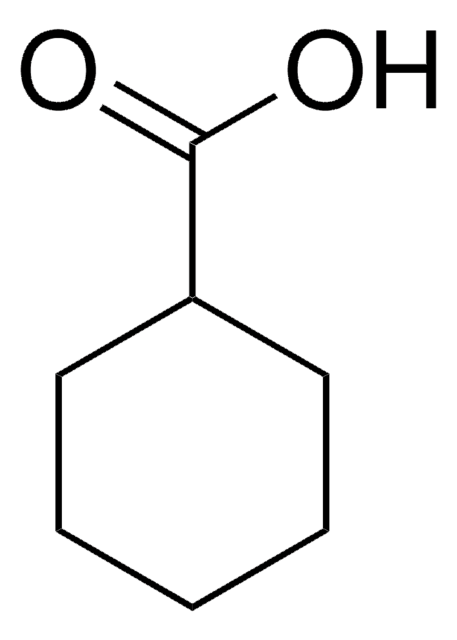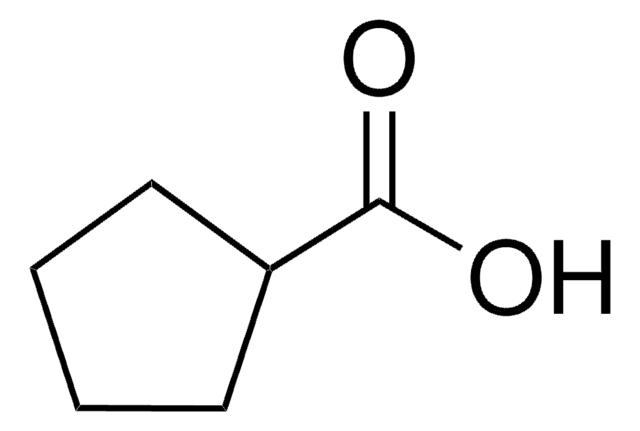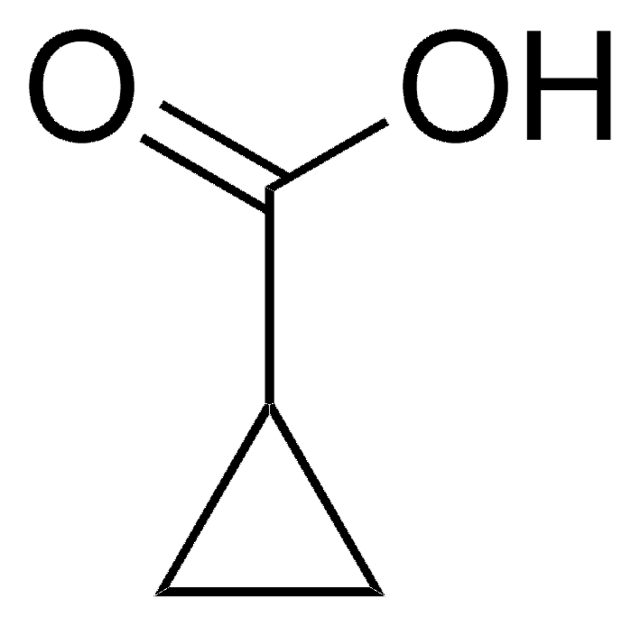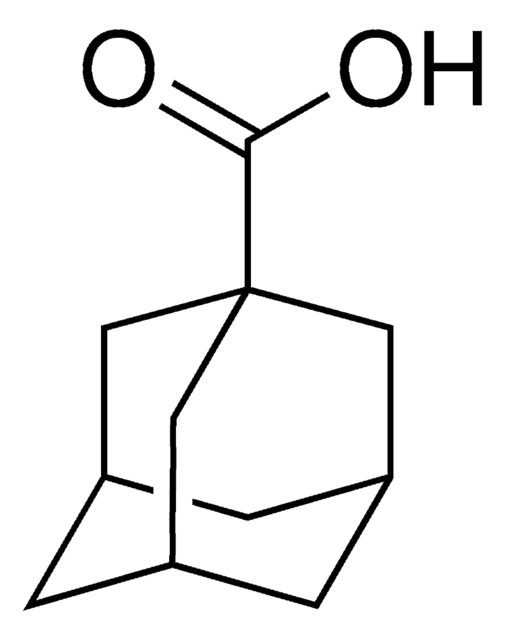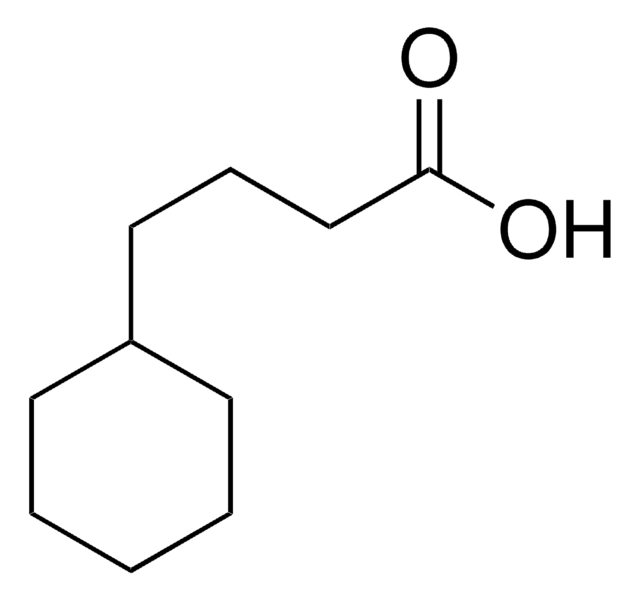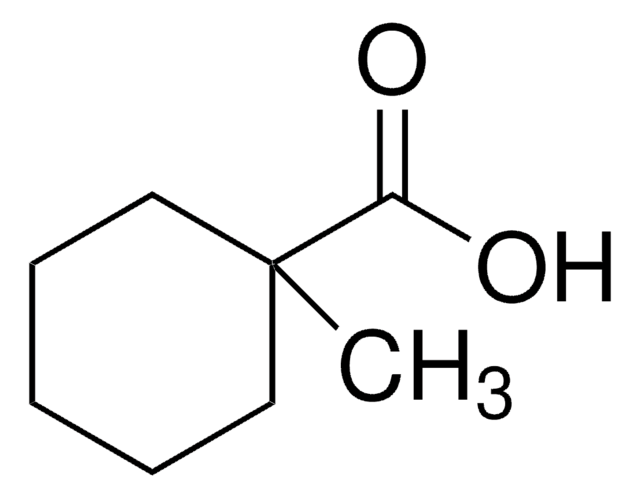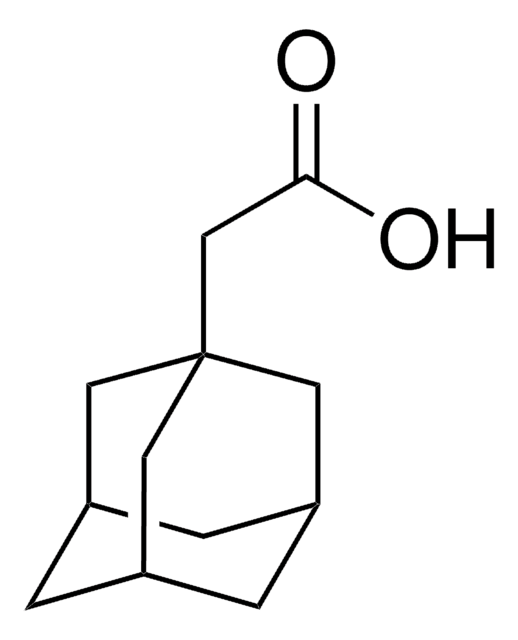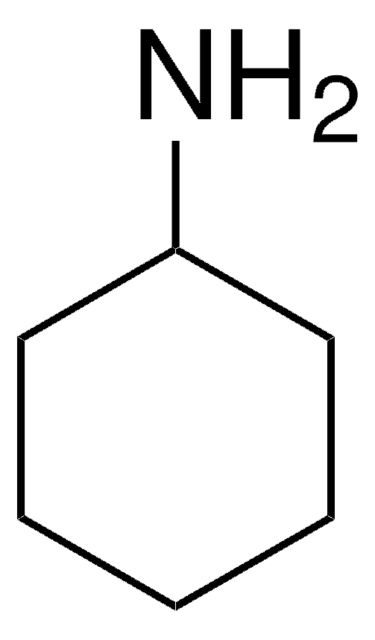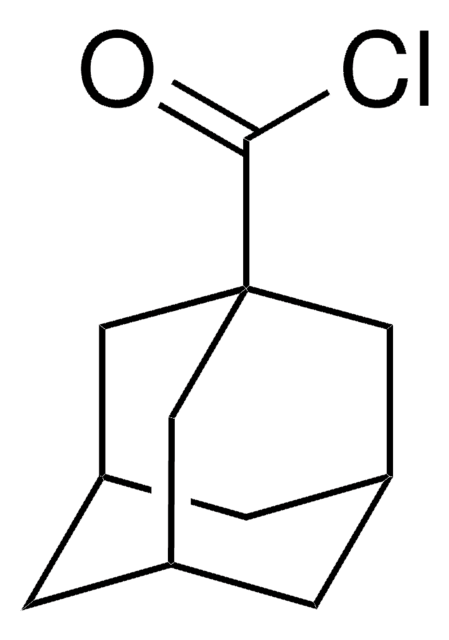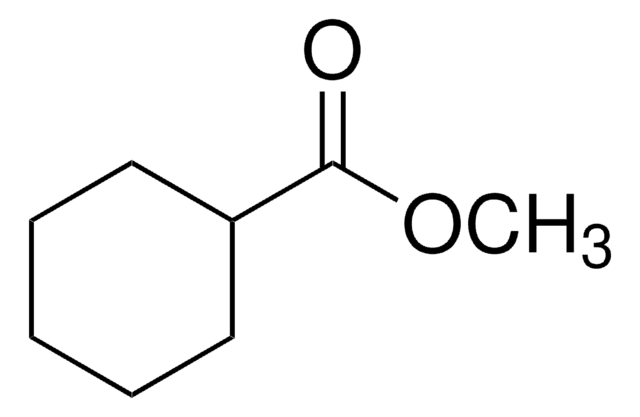추천 제품
분석
≥99%
양식
solid
refractive index
n20/D 1.463 (lit.)
bp
242-244 °C (lit.)
mp
28-32 °C (lit.)
density
1.007 g/mL at 25 °C (lit.)
SMILES string
OC(=O)CC1CCCCC1
InChI
1S/C8H14O2/c9-8(10)6-7-4-2-1-3-5-7/h7H,1-6H2,(H,9,10)
InChI key
LJOODBDWMQKMFB-UHFFFAOYSA-N
유사한 제품을 찾으십니까? 방문 제품 비교 안내
신호어
Warning
유해 및 위험 성명서
Hazard Classifications
Eye Irrit. 2 - Skin Irrit. 2 - STOT SE 3
표적 기관
Respiratory system
Storage Class Code
11 - Combustible Solids
WGK
WGK 3
Flash Point (°F)
235.4 °F - closed cup
Flash Point (°C)
113 °C - closed cup
개인 보호 장비
dust mask type N95 (US), Eyeshields, Gloves
J E Tulliez et al.
Lipids, 16(12), 888-892 (1981-12-01)
Among the urinary metabolites of dodecylcyclohexane or cyclohexylacetic acid, the glycine conjugate of 1-hydroxy-cyclohexylacetic acid was identified and its origin studied, using cyclohexylacetic acid as the starting molecule, as it results from beta-oxidation of cyclohexyldodecanoic acid produced by terminal oxidation
Hiroaki Iwaki et al.
Current microbiology, 57(2), 107-110 (2008-04-09)
Six cyclohexylacetic acid-degrading strains were isolated from soil samples in Japan and identified as members of the genera Cupriavidus (strain KUA-1), Rhodococcus, and Dietzia by 16S rRNA gene sequence analysis. For the first time members of these genera were shown
Rabea Schlüter et al.
Applied microbiology and biotechnology, 103(10), 4137-4151 (2019-04-04)
The cycloalkanes, comprising up to 45% of the hydrocarbon fraction, occur in crude oil or refined oil products (e.g., gasoline) mainly as alkylated cyclohexane derivatives and have been increasingly found in environmental samples of soil and water. Furthermore, short-chain alkylated
H J Ougham et al.
Journal of bacteriology, 150(3), 1172-1182 (1982-06-01)
A strain of Arthrobacter was isolated by enrichment culture with cyclohexaneacetate as the sole source of carbon and grew with a doubling time of 4.2 h. In addition to growing with cyclohexaneacetate, the organism also grew with cyclohexanebutyrate at concentrations
Dean M Quesnel et al.
Chemosphere, 84(4), 504-511 (2011-04-05)
Naphthenic acids (NAs) are a major contributor to toxicity in tailings waste generated from bitumen production in the Athabasca Oil Sands region. While investigations have shown that bacteria can biodegrade NAs and reduce tailings toxicity, the potential of algae to
자사의 과학자팀은 생명 과학, 재료 과학, 화학 합성, 크로마토그래피, 분석 및 기타 많은 영역을 포함한 모든 과학 분야에 경험이 있습니다..
고객지원팀으로 연락바랍니다.